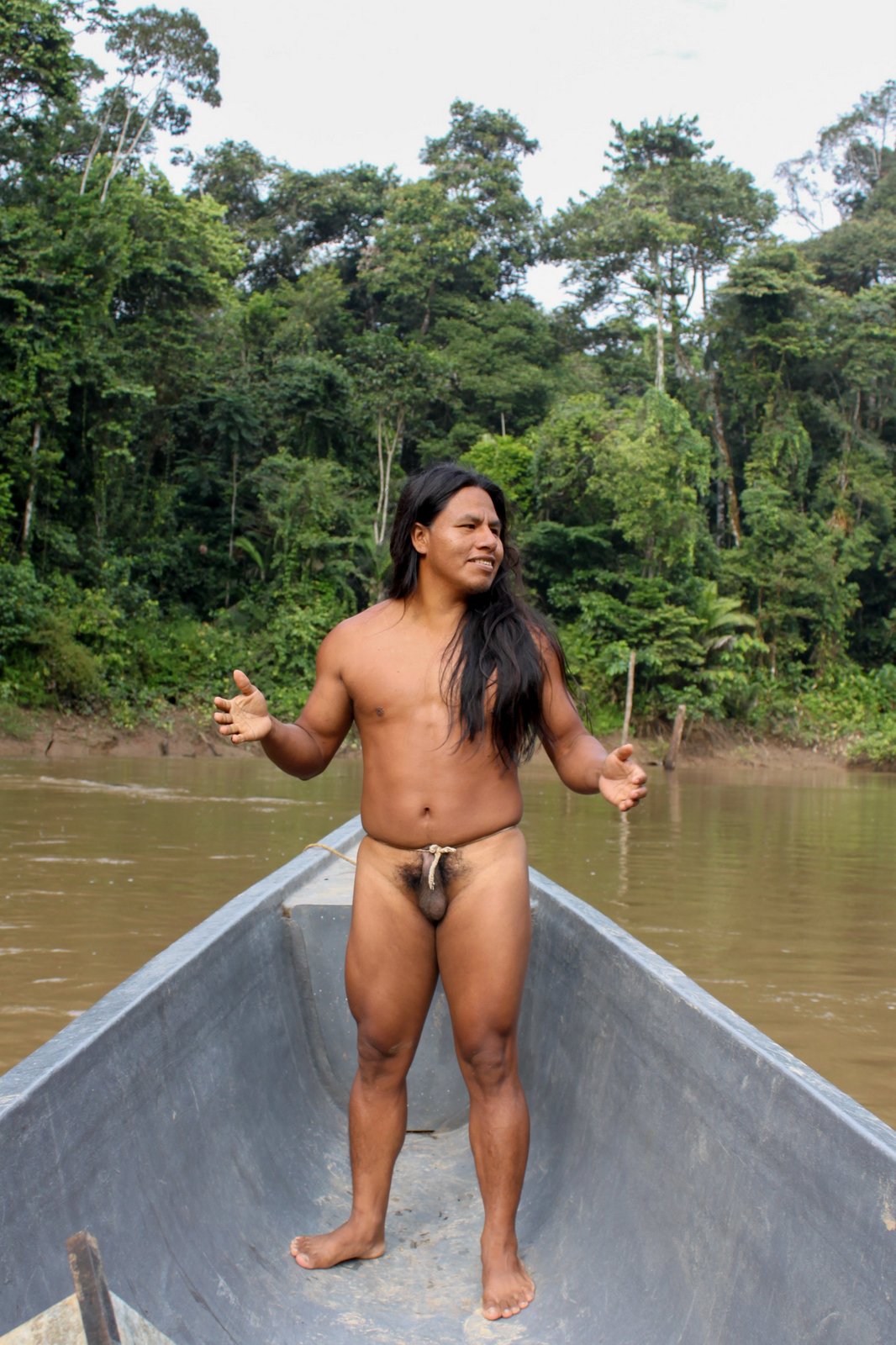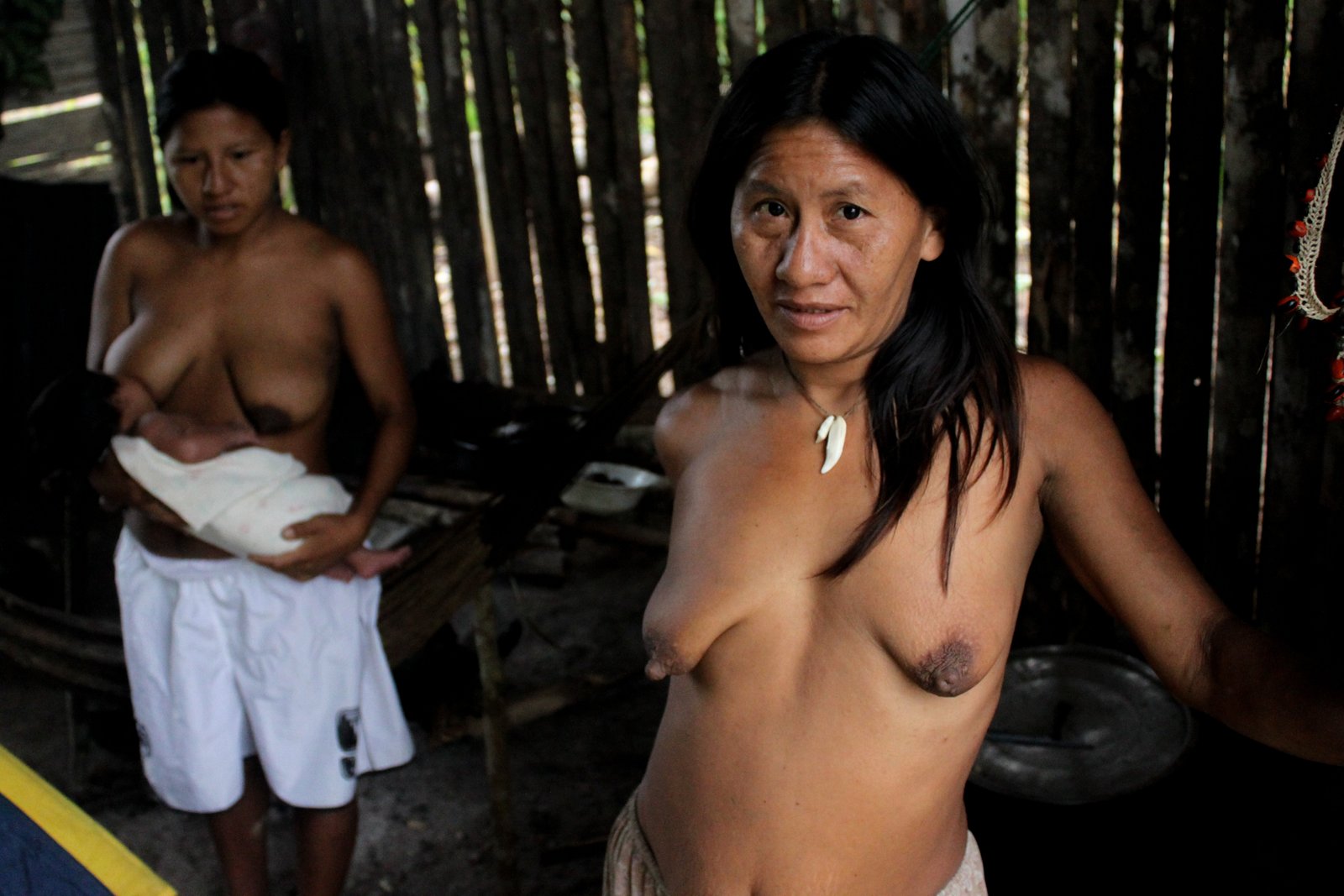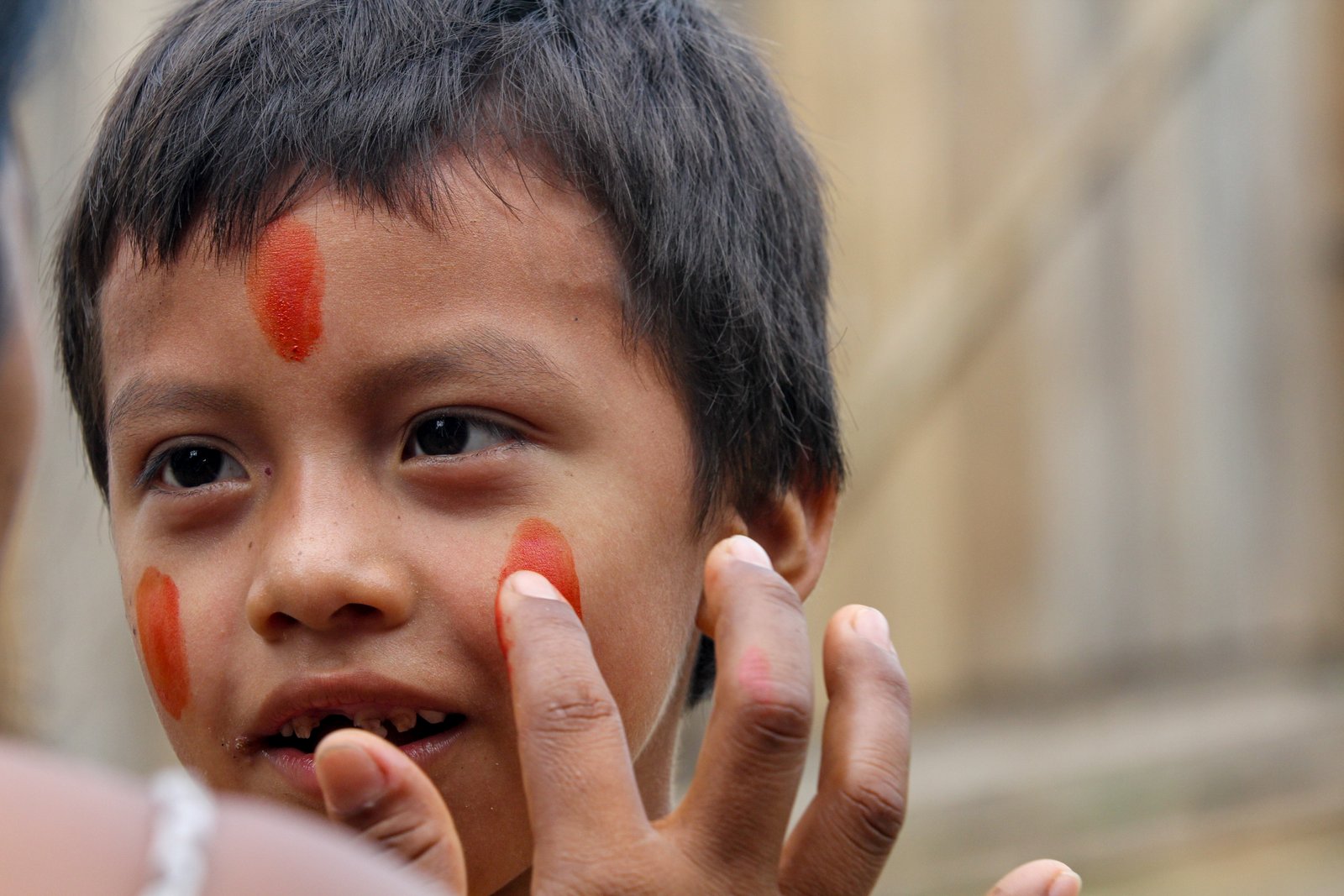I wrote these two stories for the Miami Herald. They were published in May 1990.
COCA, Ecuador – Barefoot and naked, Huaorani warriors have roamed the forest for centuries, stalking spider monkeys with poison darts and savagely spearing trespassers.
Now the rolling thunder of civilization is echoing through the trees. Oil companies are drilling new wells, colonists are buzzing down trees, missionaries are venturing out in jungle choppers.
The most primitive of the Huaorani – feared, reclusive blowgun hunters – are fleeing for their lives. The other tribesmen are threatening to take up spears to protect their land.
“It’s our territory,” tribesman Vicente Enomenga said. “We will defend it.’ Like the Indians of Brazil, the Huaorani have seen their traditional ways crumble as opportunity-seekers fan out across their delicate Amazonian habitat. But while celebrities such as Sting, the rock star, have made the Brazilian Indians’ struggle a cause celebre, the Huaorani have been almost alone in their fight.
Last month, the Ecuadorean government stepped in to help the beleaguered tribe, legalizing 1.5 million acres of Huaorani territory.
Ecuadorean President Rodrigo Borja proudly presented the land titles to tribesmen at the National Palace in Quito.
“You are free men and women, and you will never be the slaves of anyone,” he said.
An elder named Dayuma was not reassured. Clutching a sharp wooden spear, she demanded that Borja halt construction of oil roads through Indian territory and stop the flow of land-grabbing colonists.
“We will use our spears if your government isn’t successful,”she warned.
Non-Indians usually take these threats seriously, for the Huaorani also are known as the Aucas – savages.

The tribe, nearly 1,000 strong, inhabits the eastern jungles of Ecuador. Over the past 32 years, missionaries and oil workers have made peace with all but a few dozen of them – a primitive band known as the Red Feet.
The Red Feet brutally murdered a Catholic bishop and nun in July 1987. Indian activists called it “self-defense,” saying the natives were rightfully protecting their hunting grounds.
Until missionaries successfully contacted the Huaorani in 1958, the tribe roamed an 8,000-square-mile territory.
They lived like primitives, using only stone tools or stolen axes. They pierced large holes in their ears and inserted balsa plugs, and they coated their feet with bright red dye.
They were – and many still are – master hunters. They could track game for miles, sniffing out spots of urine to stay on the trail. And armed with their palm-wood blowguns, they could kill monkeys at 100 feet.
In 1968, the tribe’s hunting territory was cut to 620 square miles. And oil companies began stepping up their search for petroleum, luring thousands of workers and colonists. The population of the eastern jungle rose from 3,000 in 1970 to more than 100,000 today.
The Huaorani say these newcomers are trouble.
“Oil workers shoot their guns and the animals hide,” tribesman Enomenga said. “They dump gasoline in the rivers and the fish die.’ Government officials welcome the oil companies, saying they boost the debt-plagued economy.
Ecuador produces 145,000 barrels of oil a day. U.S. and foreign companies pump it from 6 million acres of virgin forest. In January, the government began opening up an additional 3.4 million acres.
Ampam Karakras, coordinator of Ecuador’s Confederation of Amazonian Indian Nations, said the Huaorani should reap some of the benefits of the oil boom.
“They’re being raped – culturally, economically and ecologically,” he said.
 Some tribesmen have been taking things into their owns hands, extorting money from non-Indian travelers on the isolated oil roads south of Coca.
Some tribesmen have been taking things into their owns hands, extorting money from non-Indian travelers on the isolated oil roads south of Coca.
Taxi driver Maximo Cobos says they hit him a few months ago for 5,000 sucres – about $7.
“They were standing in the middle of the road, waving guns and spears,” he says. “They asked for money. I’m not crazy. I gave it to them.’ The Huaorani say a scarcity of fish and game forces them into these things.
Signs of that can be found even in remote spots along the Cononaco River, three to four days by truck and dugout canoe from Coca.
The Huaorani there, numbering about 50, live in palm leaf huts overlooking the river. The women plant manioc and banana crops. The men hunt with curare-tipped darts.
A hunter named Nama grabbed his blowgun and led a visitor into the emerald-green forest to look for monkeys, one of the tribe’s main sources of protein. He didn’t see a single one.
The hunter was asked if he thought there were any monkeys a few more hours down the trail.
“Ba,” he grumbled – Huaorani for “no.’
This was a sidebar to the main story:
Headline: Missionaries voy to pacify fearsome tribe
COCA, Ecuador – Three years ago this summer, Bishop Alejandro Lavaca and Sister Ines Arango descended from a helicopter offering peace and shiny trinkets to a fearsome band of Huaorani Indians.
The natives attacked the missionaries and left their bodies mutilated — nude and pinned to the ground with spears.
Catholic missionaries in the frontier oil town of Coca now say they are going back into the jungle to try to pacify the Indians, known as the Red Feet.
“Suicide” is what guide Alejandro Quezada calls it. He has traveled through Red Feet territory.
“Of all the Huaorani, the Red Feet are the most feared,” he says. “They watch your every movement, but you can’t see them hidden in the trees. They’re more dangerous than the tiger.”
 Missionaries over the past three decades have accepted these risks while trying to bring God and the 20th Century to nearly 1,000 Huaorani. The Red Feet are the only ones they haven’t reached.
Missionaries over the past three decades have accepted these risks while trying to bring God and the 20th Century to nearly 1,000 Huaorani. The Red Feet are the only ones they haven’t reached.
The fierce group, one of South America’s last Stone Age tribes, is hiding out in the remote jungles southeast of Coca between the Cononaco and Tiguino rivers.
“Sooner or later, the outside world is going to reach them,” says Dr. James Yost, an anthropologist who has studied the Huaorani for 17 years. “I hate to think what’s going to happen.”
The Huaorani have killed more than a dozen outsiders in the past 15 years.
Even the 15th-Century Incas knew they were dangerous and left them alone. The traders and rubber collectors of later years had bloody battles with the Indians.
On Jan. 6, 1956, five American missionaries saw the primitive Indians near the Curaray River and offered them lemonade, yo-yos, balloons and hamburgers with mustard.
The Huaorani accepted the gifts, and the missionaries left, jubilant. But when they returned two days later, the Indians riddled them with spears and ripped their plane to pieces.
Rachel Saint, whose brother was killed in the incident,
went back in 1958, accompanied by missionary Elisabeth Elliot and a young woman named Dayuma. Again they brought gifts, but this time they lowered them in a basket containing a hidden radio receiver.
 Dayuma, a Huaorani native who had fled tribal warfare 11 years earlier, spoke to her lost relatives through the radio. The tactic worked, and the women made the first lasting, peaceful contact with the tribe. What Saint saw shocked her. Hunters murdered one another over women and witchcraft. Tribesmen buried the old and feeble alive — or just stopped feeding them. First-born females were drowned and teen-age girls raped.
Dayuma, a Huaorani native who had fled tribal warfare 11 years earlier, spoke to her lost relatives through the radio. The tactic worked, and the women made the first lasting, peaceful contact with the tribe. What Saint saw shocked her. Hunters murdered one another over women and witchcraft. Tribesmen buried the old and feeble alive — or just stopped feeding them. First-born females were drowned and teen-age girls raped.
“They led a horrible existence,” says Saint, whose exploits were told in the book A Saint Among Savages. “They are so grateful that someone rescued them from that miserable life.”
By 1970, all but the Red Feet had been contacted.
Arango, 50, and Lavaca, 67, climbed into the helicopter and flew out to the Indians’ remote territory July 21, 1987.
A pilot found their bodies the next morning — pinned down with 21 spears.
Nearby, the Red Feet had jabbed a pole into the ground and tied a bone to it — an apparent warning to others to stay away.
A 17-soldier jungle patrol went out to recover the bodies. They found 93 spear holes in the bishop, 25 in the nun.
The clerics were buried at the foot of a church altar in Coca.
Saint says the Indians kill out of fear, not hate. They’re afraid outsiders will roast them alive, then eat them, she says.
Quezada, the guide, has another theory.
“I think they kill because they don’t want to be dominated by anyone,” he says. “They just want to be free.”
